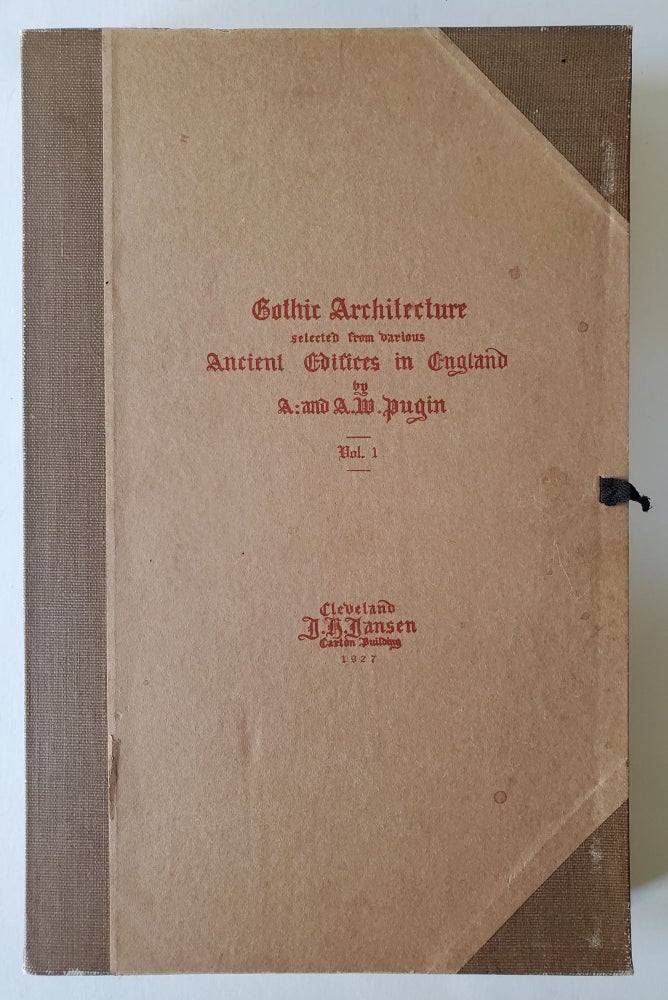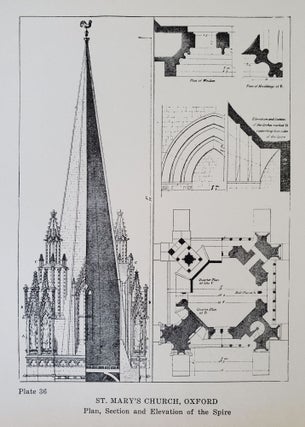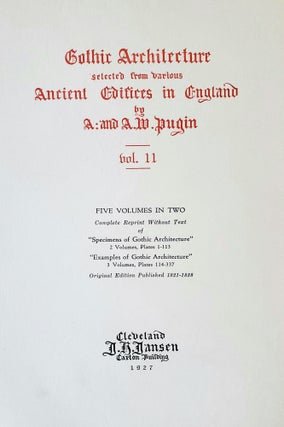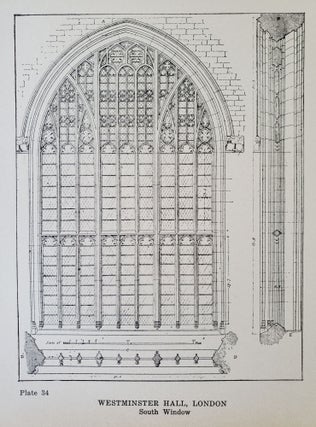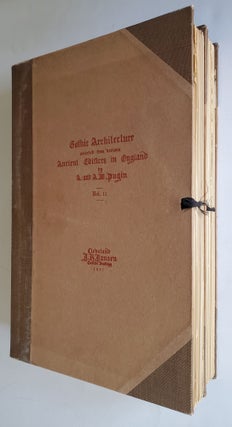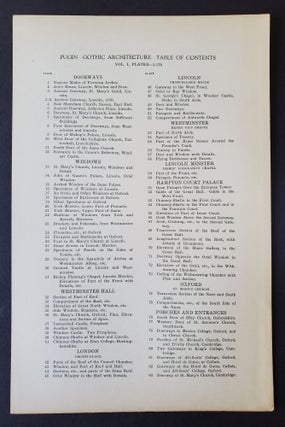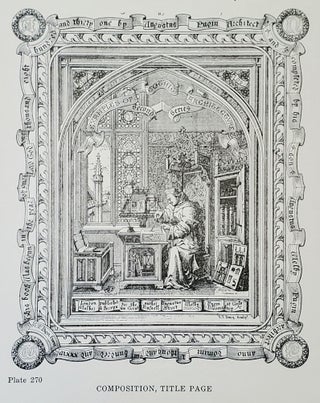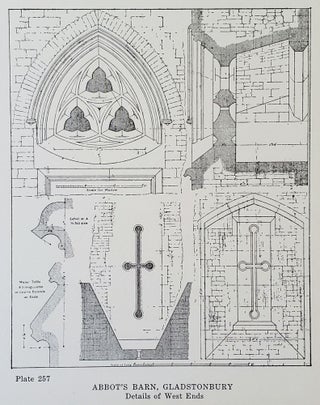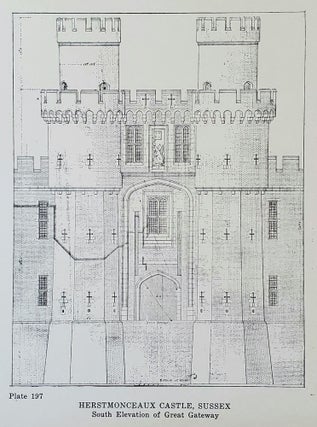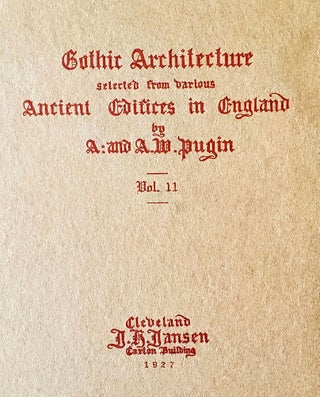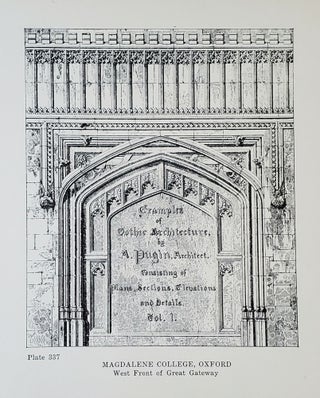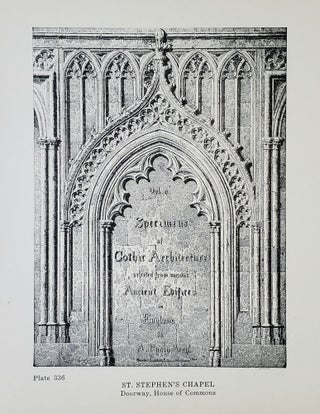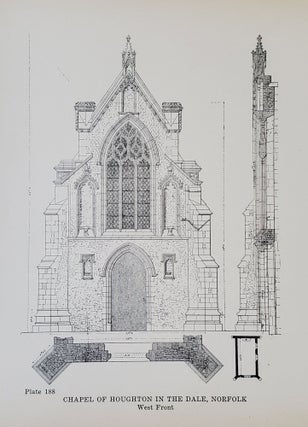Gothic Architecture; Selected from Various Ancient Edifices in England
1927: J.H. Hansen, Cleveland, Ohio. Later edition. Two volumes. Porfolio (12 1/8 inches tall), loose plates encased in original chemises of printed paper boards over brown three-quarter cloth spines, original ribbon ties. Plates clean, ties largely perished, minor toning and slight creasing to fore-edge of volume I title page, mild scuffing and toning to chemises. A near-fine set.
*WILL REQUIRE ADDITIONAL INTERNATIONAL SHIPPING FEE*. Item #1276
"THE GOTHIC REVIVAL STYLE"
Comprehensive portfolio of A.W.N. Pugin's black-and-white illustrations of the Gothic Revival—337 architectural plates housed in two portfolio volumes.
First published in five volumes between 1821 and 1833, this two-volume set is a complete reprint—wholly-illustrated and without text—of engraved plates from Specimens of Gothic Architecture (Plates 1 - 113, 2 volumes) and Examples of Gothic Architecture (Plates 114 - 337, 3 volumes). Printed by the National Printing Co. of Cleveland with title pages in Gothic red-and-black.
The son of Augustus Charles Pugin, a French draughtsman who arrived in London as a refugee in 1792, Augustus Welby Northmore Pugin, during his short life, was among the most influential architects and industrial designers in nineteenth-century Britain. The younger Pugin "was the first to reduce to axioms the fundamental relationship of structure and ornament in architecture, and the first productive architect of modern times who gave a complete, serious, and rational study to the details and inner spirit of mediæval architecture" (DNB). Recalling the "Second Pointed" style of the late-thirteenth and early fourteenth-centuries, the rise of the Gothic Revival elevated anti-classical principles of design and structure and fostered a reverence for pattern and ornament.
Inspired by his aesthetic interest in the Middle Ages, A.W. Pugin converted to Catholicism in 1834, part of the revivalism of the age: "The combined effect of the Oxford Movement and the Gothic Revival changed the metaphysical atmosphere considerably. As Victoria ascended the throne in 1837, the medievalist winds of change were sweeping across England" (Joseph Pearce). Pugin "established himself from 1838 as the architectural impresario of the Catholic revival in the British Isles, and, even more than his buildings, his journalism and publications spread this message" (Roderick O'Donnell). Pugin's influence continued after his early death (at age 40) in 1852. In "these vital source books for the Gothic revival, the generation of Cram and Goodhue found just what it wanted" (Roderick O'Donnell). Joseph Pearce. Catholic Literary Giants: A Field Guide to the Catholic Literary Landscape, Roderick O’Donnell, Pugin in America (The Institute for Sacred Architecture).
Price: $300.00

